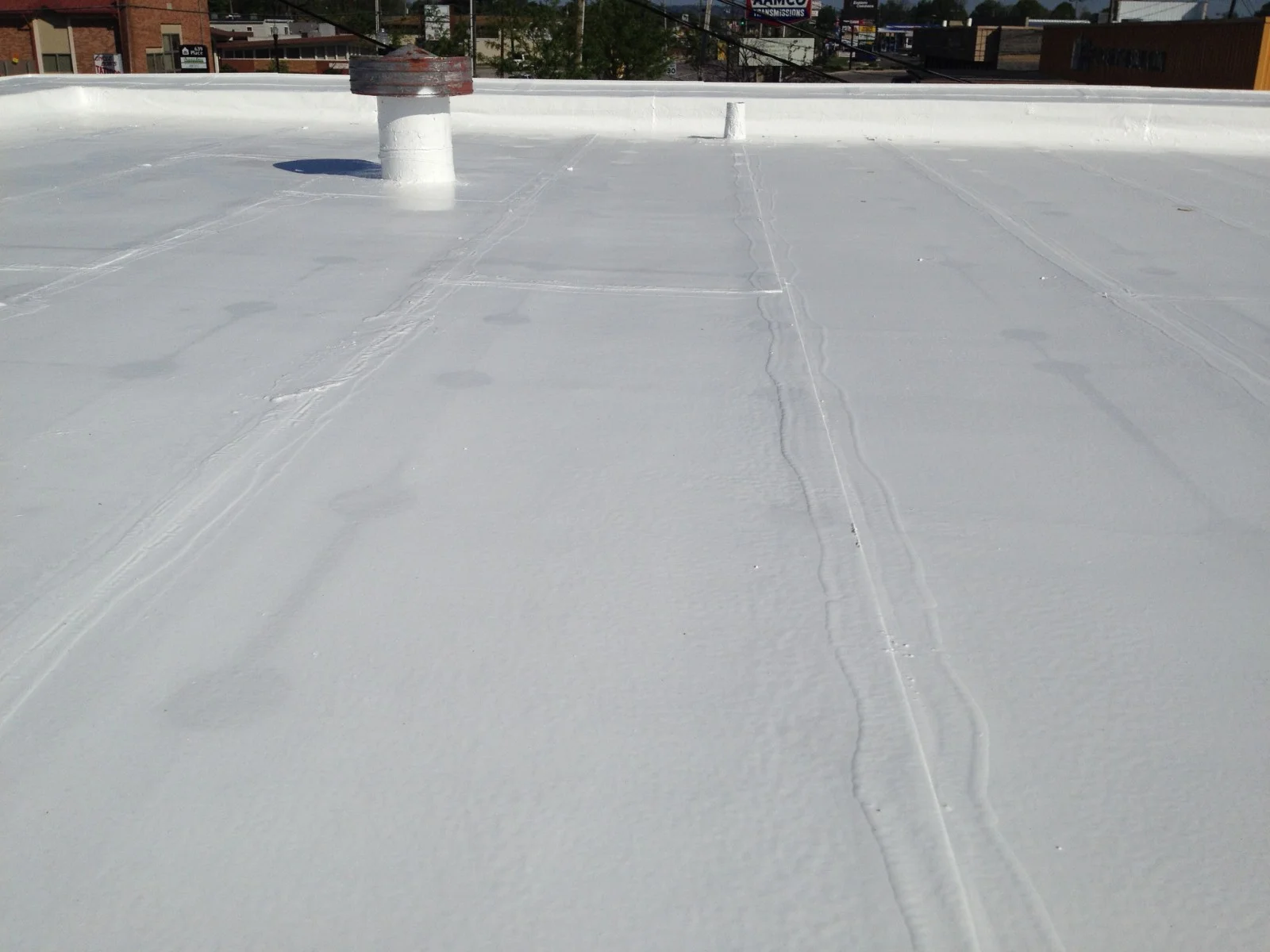Flat roof systems come in all shapes and sizes. Modified bitumen rolls, TPO and EPDM sheets are common roof systems. Of old. Over the last 10 to 20 years, liquid roof coating systems have come to favor – and for good reason. They are better and actually – less expensive.
There was a time when coating systems only served to reflect the sun – known as silver coatings. But roof coatings have improved over the years and are now the preferred method of recovering a flat roof. Asphaltic elastomeric, polyurethanes, epoxies and silicones are all options when it comes to liquid roofing.
The problems associated with conventional roof membranes include the following:
- Membranes are installed in 3-foot rolls. Seams represent a potential area where water can enter and lead to leaking. Liquid roof coatings are monolithic and seamless.
- Flashing. Roof membranes do not easily contour to various roof shapes. For instance, blending a membrane into a pipe that sticks up from a roof is an impossibility and is the reason why pitch-pockets are required. All these pitch pockets present potential sources of leaks. Liquid roof systems contours to the various shapes found on a roof – seamlessly.
- Weight. Roof membranes of old require recovery boards and the combination can add substantial weight to a roof structure. Consequently, only two roofs are allowed by building code. Liquid roof systems are applied directly to the existing membrane and are substantially lighter.
- Asbestos. Roof removal requires asbestos testing and abatement. Liquid roof systems are applied over the existing roof typically eliminating the potential of asbestos abatement
- Liquid roof systems are less expensive to install as they do not require removal, coverboards, anchors.
Warranties for traditional membrane systems and liquid coating systems are typically similar. The biggest negative to a liquid roof system is the inability to add roof insulation. That is, in order to improve on roof insulation, a traditional roof membrane system is required. Also, not all roofs are candidates for liquid roofing systems. If the existing membrane is too deteriorated or if there is too much water accumulation below the roof membrane and in the insulation, a liquid roof will not adhere properly. Typically, a liquid roof system will require a thermographic evaluation to detect evidence of underlying moisture.
Like traditional membrane roof systems, liquid roof systems also come in a variety of choices including asphalts, elastomerics, epoxies and silicones. Silicone liquid roof systems are generally believed to be the best of the best.
With the many advantages of liquid roofing, it is clear that liquid roof coating systems will dominate the rest of this century as the preferable flat roof system.

